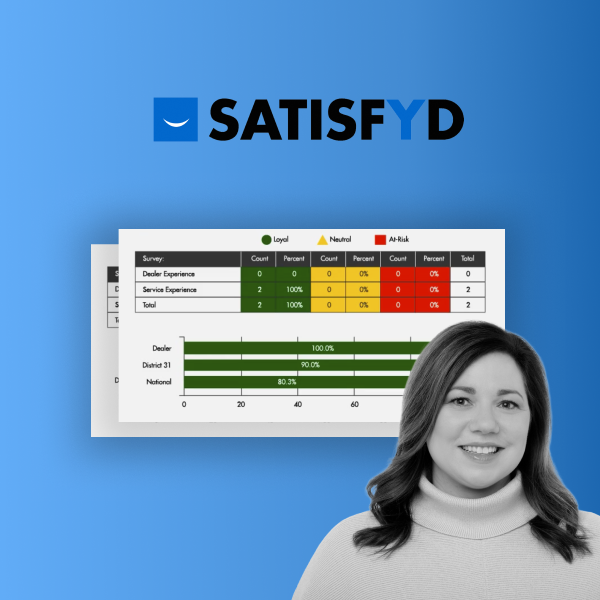Data-driven organizations are three times more likely to improve their decision-making processes compared to their non-data-driven counterparts. Plus, they gain better visibility into their performance and give their employees a measurable way to tie data insights directly to business impacts.
With so much to gain from maximizing their data, it’s no surprise that companies in a multitude of industries, markets, and geographies are looking for a high-performing business intelligence (BI) platform to take their data and analytics practices to the next level.
To effectively support your data-driven initiatives, a BI platform must align with your organization’s short- and long-term business goals and meet your unique technical, functional, and financial requirements to effectively support data-driven initiatives.
Rather than shopping solely on price point or opting for the trendiest tool on the market, we recommend taking a few proactive steps to ensure you choose a platform that can support your business, today and down the road.
Here are a few essential points to consider as you begin your research.
Build a Strong BI Foundation
With so many options on the market, you may find yourself drawn to BI solutions that offer cutting-edge technologies like AI-powered reporting or machine learning for data analytics. These innovative features can add value to your business, but they shouldn’t be the driving factors behind your BI practice.
Instead, prioritize the fundamentals — the primary goals you want to reach or benefits you’re looking to gain by implementing a new solution. Your shortlist may include specific features, business outcomes, or a mix of both, such as:
- Reduce time spent on reporting
- Access real-time dashboards
- Inform decision-making
- Increase data visibility across teams
- Unify data from multiple sources
Ultimately, your priorities will depend on your BI maturity and existing business goals. Work with your employees, stakeholders, and executives to align on your top priorities and what you want to achieve with your new BI platform. Then, use those insights to guide your search for a provider.
The core of a strong BI foundation includes reporting, dashboards, and data visualization tools. Check these items off your list first, then follow up with the goals, constraints, and requirements specific to your organization.
This foundational feature set does more than meet your short-term needs — it also enables growth and innovation by supporting new technologies, custom solutions, and high-value integrations.
Prioritize Flexibility and Scalability
Flexibility will heavily influence the success of your new business intelligence platform. While the basic, foundational elements are essential, they shouldn’t define the extent of its capabilities. And even the most impressive solution won’t add value to your business if you can’t connect it to your data.

Your new solution should support your business in the long term without spiking total cost of ownership or requiring extensive development work. In short, an effective BI platform integrates seamlessly into your existing data strategy rather than forcing you to invest in additional tools or alter your current data infrastructure.
Whether you use just a few systems or an intricate network of internal and external sources, you should be able to unify all of your data and gain instant access to dashboards and analyses without manual imports or extensive development work. A cohesive platform will deliver near-instant ROI and allow you to make strategic decisions based on multi-source data.
Your platform should be compatible with any tools or systems you currently use, but it should also be optimized for scalability. Ideally, you’ll partner with a provider that supports continuous innovation by adding new integration options regularly. Bonus points if they specialize in your industry or market segment.
Consider the User Experience
User adoption is critical in helping your business become more data-driven. However, most legacy BI platforms are technically complex and challenging to use. They require you to rely on a small group of specialists to pull insights or build reports for your entire organization. Not only is this approach frustrating for your data analysts, but it also puts your data out of reach when these seasoned experts retire or leave your organization.
As you shop for a new solution, evaluate accessibility and usability alongside the robust backend features needed to support your BI strategy. Consider elements like:
- Drag-and-drop dashboards
- Automated reporting features
- Intuitive data visualization tools
- User- and role-based access controls
Your BI platform should empower all employees to actively use data to enhance their daily work. It should be easy for non-technical users to access, customize, and export reports and dashboards or reference information from other departments in real-time.
A user-friendly platform increases user adoption rates and smooths the transition between tools, opening new opportunities for cross-functional collaboration and increasing visibility across internal teams and your larger data network.
Find the Right BI Partner
The right business intelligence platform can help you make better business decisions, eliminate inefficient manual tasks, and increase revenue by understanding your customers’ behavior.
However, building a robust, future-focused BI practice requires more than determination and an impressive toolset. You need a reliable partner, like TARGIT, who will help you meet both your short-term and long-term BI goals.
Consider how each platform provider supports data-driven operations and delivers value to their partners, customers, and end-users. Ask questions like:
- Do they invest in R&D for new, innovative solutions and system integrations?
- Do they have a track record of success with organizations similar to yours?
- Do their teams have longstanding expertise in BI and analytics implementations? In data strategy? In your industry?
Your provider should invest in ongoing partnerships, not one-off implementations. They’ll offer value-added services and expert guidance that aligns with your organization’s BI roadmap and helps you grow your BI practice over time. Plus, you can lean on them for in-depth recommendations, best practice adoption, and other strategic support.
No matter where you stand today, your BI practice will continue to evolve, which means you need a scalable, end-to-end business intelligence platform that can support your business at every stage of its BI journey.
TARGIT’s proprietary BI and analytics solution, TARGIT Decision Suite, provides robust data insights and impressive backend capabilities without compromise. User-focused features give teams access to data and reporting information from Windows, web, or mobile devices in just a few clicks.
Ready to learn how TARGIT can power your organization’s BI practice? Request a personalized demo.




